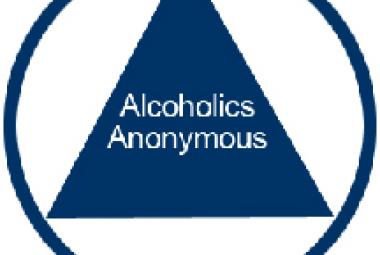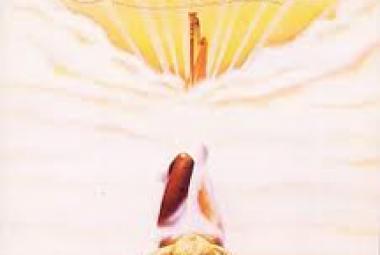The Byrds were an American rock band, formed in Los Angeles, California in 1964. Although they only managed to attain the huge commercial success of contemporaries like the Beatles, the Beach Boys, and the Rolling Stones for a short period (1965–66), the Byrds are today considered by critics to be one of the most influential bands of the 1960’s. Initially, they pioneered the musical genre of folk rock, melding the influence of the Beatles and other British Invasion bands with contemporary and traditional folk music. As the 1960’s progressed, the band was also influential in originating psychedelic rock, raga rock, and country rock. The band’s signature blend of clear harmony singing and McGuinn’s jangly twelve-string Rickenbacker guitar has continued to be influential on popular music up to the present day. (More from Wikipedia)
The next album by Les Sinners (though with the name shortened to just Sinners) for Jupiter, Vox Populi (Latin for “Voice of the People”) came out in 1968 and is among the crush of “concept albums” that followed in the wake of the Beatles’ 1967 masterpiece, Sgt. Pepper’s Lonely Hearts Club Band. The album has acquired legendary status among fans of Quebec’s musical scene. The album is entirely in French and is probably the first and certainly one of the best French Canadian concept albums ever released. A whole barrel of musical influences are present: the Beatles, the Monkees, the Byrds, the Who, Indian music, etc. The cover appears to show Jesus speaking in a snowy cemetery.
(April 2013)
* * *
I was born a couple of years later than Greg Shaw, so I turned 14 in 1965. By then, the Beatles and the Rolling Stones were old news; and while I was still paying attention, what was really grabbing me at the time were American artists and bands. First and foremost was “Like a Rolling Stone” by Bob Dylan; that song – plus the flip side “Gates of Eden” that was nearly as long and every bit as good – captivated me in a way that I just couldn’t keep quiet about. Other great folk-rock sounds of that period included the release of the cover of Dylan’s “Mr. Tambourine Man” by the Byrds and the revamped “The Sounds of Silence” by Simon and Garfunkel. Bob Dylan himself preferred the Byrds’ cover to his own recording of “Mr. Tambourine Man”; but in my usual contrarian way, I preferred Dylan’s original – it was a lot longer for one thing.
These songs were followed closely by the glorious sounds of garage rock and psychedelic rock that were then in their infancy. Songs like “Pushin’ Too Hard” by the Seeds, “We Ain’t Got Nothin’ Yet” by Blues Magoos, and “I Had Too Much to Dream (Last Night)” by the Electric Prunes really made an impression on me. It wasn’t until I picked up the Nuggets collection and then the numerous Pebbles albums that I plumbed the depths of this scene, but it was by no means brand new to me either.
About his next album, Another Side of Bob Dylan, which was released later in 1964, Bob Dylan told Nat Hentoff in New Yorker magazine: “There aren’t any finger pointing songs [here]. . . . Now a lot of people are doing finger pointing songs. You know, pointing to all the things that are wrong. Me, I don’t want to write for people anymore. You know, be a spokesman.”
His song “My Back Pages” is most direct about this new direction in his music and is blatantly self-critical – particularly in the chorus line, “I was so much older then / I’m younger than that now”. The Byrds released a version of “My Back Pages” in early 1967, the seventh and last Bob Dylan song that the band covered and released as a single.
(May 2013)
* * *
Van Dyke Parks is a native of Hattiesburg, Mississippi and was a musical prodigy. He studied the clarinet and also did some work as a child actor; while in his teens, Parks appeared in Grace Kelly’s final film, The Swan (1958). After graduating from college, he made some recordings for MGM Records in 1964 that included “Come to the Sunshine”; the touring band that he put together included a young Stephen Stills. Primarily though, he worked behind the scenes, playing as a session musician with Sonny and Cher (before they even took that name) and Paul Revere and the Raiders under producer Terry Melcher. His other early credits include playing Hammond Organ on the Byrds’ Fifth Dimension album and also keyboards for Judy Collins, plus arranging songs for Tim Buckley.
* * *
Wikipedia describes what happened next: “On June 15, 1965, immediately after the recording session of ‘Like a Rolling Stone’, [Tom] Wilson took the original acoustically instrumented track of Simon and Garfunkel’s 1964 version [of “The Sounds of Silence”], and overdubbed the recording with electric guitar (played by Al Gorgoni and Vinnie Bell), electric bass (Joe Mack), and drums (Buddy Saltzman), and released it as a single without consulting [Paul] Simon or [Art] Garfunkel. The lack of consultation with Simon and Garfunkel on Wilson’s re-mix was because, although still contracted to Columbia Records at the time, the musical duo at that time was no longer a ‘working entity’. Roy Halee was the recording engineer, who in spirit with the success of the Byrds and their success formula in folk rock, introduced an echo chamber effect into the song. Al Gorgoni later would reflect that this echo effect worked well on the finished recording, but would dislike the electric guitar work they technically superimposed on the original acoustic piece.”
(June 2013/2)
* * *
So you want to be a rock ’n’ roll star
Then listen now to what I say
Just get an electric guitar
And take some time and learn how to play
And when your hair’s combed right and your pants fit tight
It's gonna be all right
So said the Byrds – specifically songwriters Jim McGuinn and Chris Hillman – back in 1967, and the formula still works pretty well to this day.
The lyrics are more than a little cynical – check the next to last line – and the fact is, no one has really discovered the secret formula. “So You Want to be a Rock ’n’ Roll Star” was written in the wake of the creation of The Monkees television show and the Monkees band, who became known by many as the Pre-Fab Four (the Beatles of course being the original Fab Four).
* * *
David Crosby had been a member of the Byrds but was forced out in late 1967 due to friction with others in the band.
David Crosby met Graham Nash of the British Invasion band the Hollies when the Byrds toured England in 1966; when the Hollies came to L.A. in 1968, they reunited their acquaintance.
(April 2014)
* * *
I always thought that “Jesus is Just Alright” was their first hit song, but it was actually the third single released by the Doobie Brothers (in late 1972), after “Listen to the Music”. Among rock bands, the Byrds actually recorded “Jesus is Just Alright” first, including it on their 1969 album, Ballad of Easy Rider.
(July 2014)
* * *
The music by the Holy Ghost Reception Committee #9 is amazing – Byrds-style folk-rock, straight-up rockers, garage rock, and early CCM. The opening song, “The Resurrection” is a particular favorite, but the whole album flows wonderfully. That the songwriters and players are just 15 and 16 years old just adds to the wonder of what they have accomplished.
(August 2014)
* * *
The Church is a long-lived Australian alternative rock band that was founded in 1980. The band is known for their psychedelic flourishes and Byrds-style Rickenbacker guitars. Their wonderful fifth album Starfish, which came out in 1988, includes one of my favorite 1980’s songs, “Under the Milky Way”.
(October 2014)
* * *
Kim Fowley was a hustler first and foremost and would be a contender with James Brown as the Hardest Working Man in Show Business, at least among those (mostly) working behind the scenes. The Sun Herald obituary noted: “[Kim Fowley] went on to write or produce songs for a range of musicians, including the Byrds, the Beach Boys, Frank Zappa and the Mothers of Invention, Gene Vincent, Helen Reddy, and Warren Zevon” – but the article could just as easily have listed a different half-dozen prominent names.
(January 2015/1)
* * *
This started a whole parade of 1960’s artists who recorded Bob Dylan songs. The Byrds alone released five different Bob Dylan songs as singles, starting with “Mr. Tambourine Man” (their first hit song and only their second single). The 2002 reissue of The Byrds Play Dylan (originally released in 1979) has 20 Dylan songs on it, all recorded during the 1960’s.
Several other major artists have launched their careers with Bob Dylan songs, Olivia Newton-John (“If Not for You”), the Turtles (“It Ain’t Me Babe”), and Cher (“All I Really Want to Do”) among them. Cher’s hit version of “All I Really Want to Do” had to compete on the charts with the Byrds’ version of the same song, “All I Really Want to Do”. Additionally, Manfred Mann and Manfred Mann’s Earth Band have salted their albums with mostly obscure Bob Dylan songs since their third release, As Is (1966).
* * *
After their marriage, Mimi and Richard Fariña began performing as a folk-rock duo that were much closer to the folk end of things than, say, the Byrds. Their first album was Celebrations for a Grey Day (1965). Their best known
songs are “Pack up Your Sorrows”, “Reno, Nevada”, and “Birmingham Sunday”. “Reno, Nevada” was one of the early songs performed by Fairport Convention (dating back to the time when Judy Dyble was the band’s lead singer). As recorded by Joan Baez, “Birmingham Sunday” became the theme song for the Spike Lee documentary film 4 Little Girls (1997) about the infamous 1963 church bombing that killed four young children.
(March 2015)
* * *
So what is “psychedelic rock” anyway? I once described it as “music designed to be enjoyed while under the influence of psychotropic drugs such as marijuana and LSD”, but I never intended that to be a definition. The way that the Wikipedia article on psychedelic rock starts isn’t much better: “Psychedelic rock is a style of rock music that is inspired or influenced by psychedelic culture and attempts to replicate and enhance the mind-altering experiences of psychedelic drugs.” The article lists the pioneering bands as being the Beatles, the Beach Boys, the Byrds, and the Yardbirds.
(July 2015)
* * *















